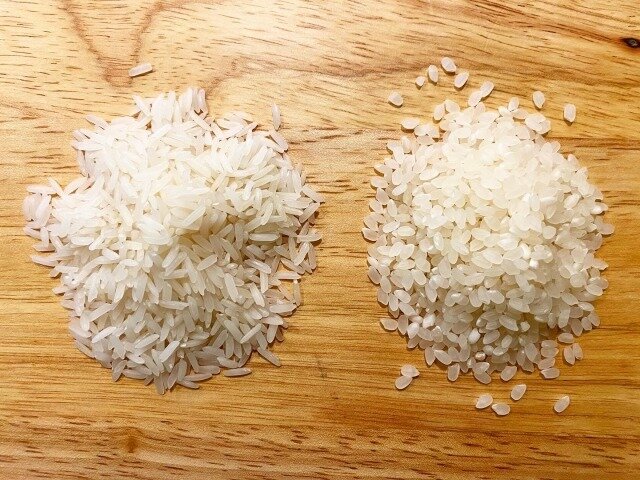The Production Process and Characteristics of Awamori: A Comparison with Honkaku Shochu
Awamori is a traditional distilled spirit produced in Okinawa Prefecture. While classified as a type of honkaku shochu, its production method is distinct and unique. With roots tracing back to the Ryukyu Kingdom, its traditional process creates flavors not found in other distilled spirits. This document outlines the production methods of Awamori, highlighting its differences from honkaku shochu.
1.Unique Characteristics of Raw Materials
The most significant differences between Awamori and honkaku shochu lie in their raw materials and production methods. Awamori uses Thai rice (indica rice) rather than Japanese rice (japonica rice). Thai rice is long-grained, firm, and high in starch, contributing to the distinct aroma and flavor of Awamori.

2.Distinctive Raw Material Processing
One of Awamori’s unique features is its use of raw, unsteamed rice. Unlike honkaku shochu, which steams its ingredients, Awamori uses washed but uncooked Thai rice. This method preserves the natural characteristics of the rice, a tradition passed down from the Ryukyu Kingdom era.
3.All-Koji Brewing Method
Awamori employs an exclusive method known as "all-koji brewing." While honkaku shochu adds koji mold to steamed ingredients, Awamori ferments its mash entirely from rice converted into koji mold. This approach maximizes enzymatic activity, resulting in robust fermentation and unique flavors.
4.The Role of Black Koji Mold
Another distinctive aspect of Awamori is its exclusive use of black koji mold. While honkaku shochu may use black, white, or yellow koji molds, Awamori traditionally relies on black koji. Black koji produces high levels of citric acid and has strong fermentation power, creating Awamori’s characteristic aroma and flavor.
5.Production Process Characteristics
The production process of awamori is uniquely distinct. It begins with washing Thai rice and cultivating black koji mold to create "awamori koji." Water and yeast are then added to this koji for primary fermentation. Unlike traditional shochu, awamori does not involve a secondary mash fermentation step. Instead, the all-koji brewing method allows starch breakdown and fermentation to occur simultaneously, resulting in a richer and more complex flavor profile.
6.Fermentation and Distillation
Fermentation lasts approximately two weeks at around 25°C. The aromatic compounds generated during this process contribute to Awamori’s distinctive aroma. The fermented mash is then distilled using a traditional single distillation method (tanitsu joryu). Atmospheric pressure distillation is typically used, preserving the rich flavors and aromas of the raw materials.
7.The Value of Aged Awamori (Kusu)
One of Awamori’s standout features is its value enhancement through aging. Awamori aged for over three years is called kusu (古酒) and is highly prized for its smoothness and complex aroma. Traditionally, aging was done in ceramic pots (kame), though modern producers now use a variety of containers.
8.Connection to Okinawa’s Climate and Culture
Awamori production is closely tied to Okinawa’s hot and humid climate, which supports the growth of black koji mold and influences the aging process. Additionally, Awamori complements Okinawa’s culinary culture, pairing perfectly with local dishes.
9.Key Characteristics of Awamori
Awamori’s production process and features can be summarized as follows:
- Use of Thai rice without steaming.
- All-koji brewing method.
- Exclusive use of black koji mold.
- A single fermentation stage.
- Traditional atmospheric distillation.
- A unique aging culture (kusu).
- Advancements in Production Techniques
While staying true to traditional methods, Awamori production continues to evolve. Modern advancements include improved temperature control and the introduction of new aging containers. However, the core of Awamori production remains rooted in the time-honored techniques of the Ryukyu Kingdom.
10.Conclusion
Awamori holds a distinctive place among Japanese distilled spirits. Its unique raw materials, traditional production methods, and long history contribute to its unparalleled appeal. Balancing heritage with innovation, Awamori continues to captivate enthusiasts worldwide, cementing its reputation as a singular and cherished distilled spirit.



